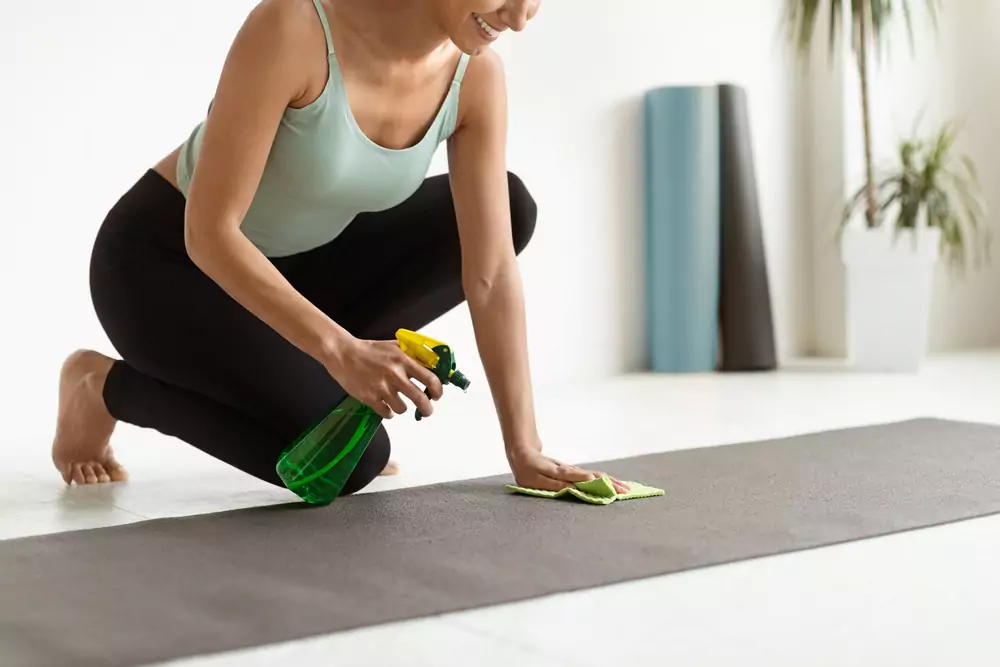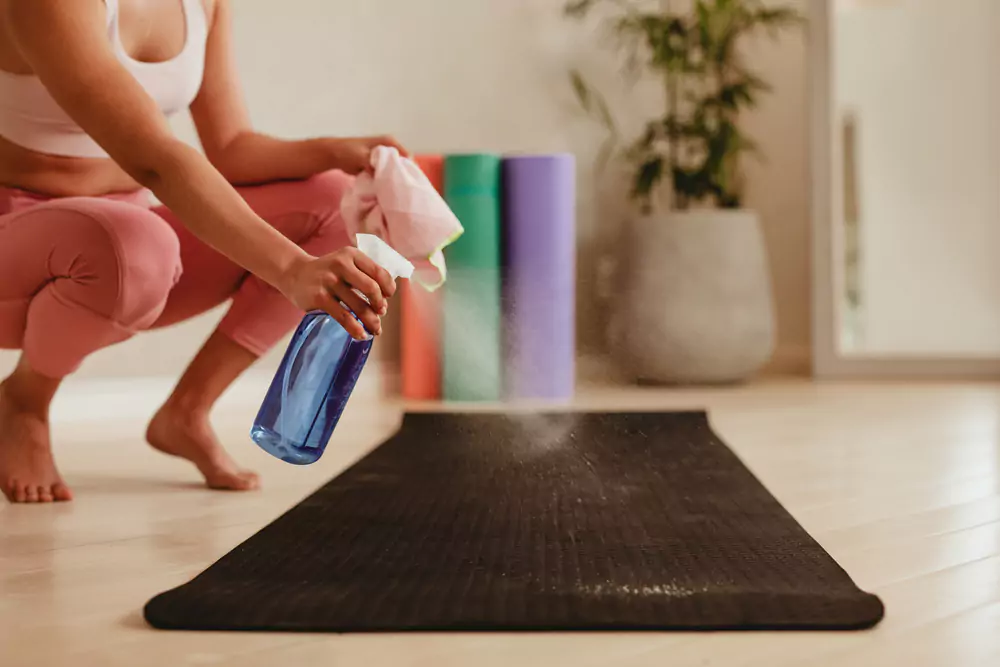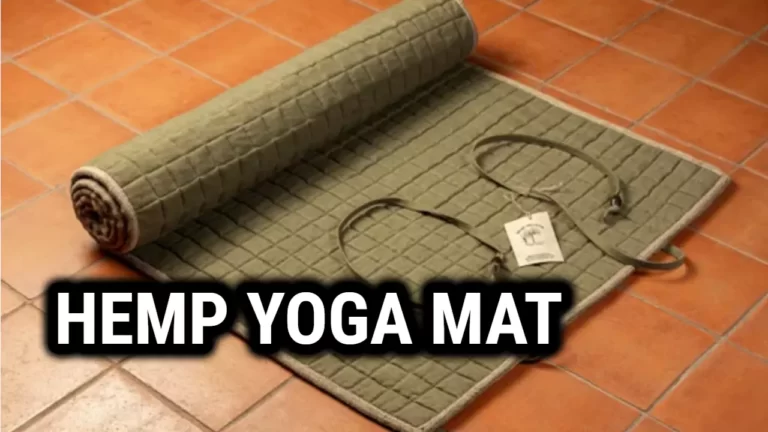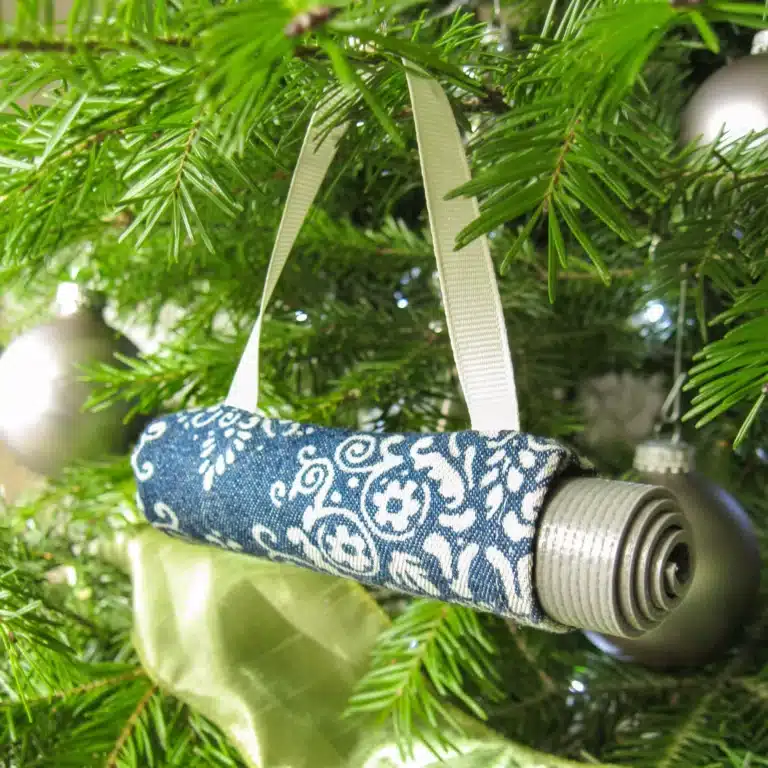Yoga Mat Maintenance – How to Clean and Store Your Yoga Mat for Long-Term Use

Yoga is a calming and restorative practice that offers countless benefits to both mind and body. However, if you want to make the most out of your yoga sessions, it’s essential to look after your yoga mat properly. Cleaning and storing your mat in the correct way will help it last for years to come.
Here, we’ll explore how to clean and store your yoga mat for long-term use. You’ll learn what materials are best suited for cleaning, as well as top tips on keeping your mat in good condition. Plus, discover why proper storage is important and find out which methods are best.
So if you’re looking for advice on keeping your yoga mat in tip-top shape, you’ve come to the right place! Read on to find out how you can maintain your yoga mat for long-term use.
When To Start Cleaning Your Mat

It’s important to keep your mat clean as you use it regularly. But when is the right time to start cleaning your mat? Just like any of our possessions, a yoga mat requires some maintenance from time to time.
It’s no secret that in order for us to make the most of our yoga practice, it’s important to clean your mat. Let’s take a look at when and why it is necessary for us to give our mats some TLC (tender love & care).
As yogis, we want our yoga practice to be as rewarding and enjoyable as possible. That’s why it’s essential to keep our mats in good condition. It’s easy for dirt and bacteria to accumulate over time, so cleaning your mat regularly can have a huge impact on its longevity and effectiveness. Taking the appropriate steps now will help make sure that your mat serves you well in the long run!
We’ve understood the importance of cleaning our mats; let’s get into the specifics of how we can do this properly.
Steps For Cleaning Your Mat

1. Dampen your yoga mat with warm water.
2. Apply a cleaner or a solution of warm water and mild soap.
3. Gently rub the solution into the surface of the mat.
4. Rinse with warm water.
5. Gently squeeze out any excess moisture.
6. Hang the mat up to dry in a well-ventilated area away from direct sunlight.
7. For deeper cleaning, spray white vinegar on the surface and wipe down with a damp cloth or paper towel.
8. Alternatively, lightly sprinkle baking soda on the surface and scrub off any dirt or debris with a soft brush.
9. Wipe the surface down with a damp cloth or paper towel and allow to air dry.
10. Avoid using bleach or any harsh chemicals as these can damage the surface of your mat over time.
Disinfectants To Avoid
It’s estimated that more than 80 million Americans practice yoga regularly. With this in mind, it’s important to know how to properly clean and store your yoga mat for long-term use. When cleaning your mat, there are certain disinfectants you should avoid – namely, anything containing bleach or alcohol.
Bleach and alcohol can damage your mat, making it less comfortable and potentially hazardous. Instead of bleach or alcohol-based products, opt for a gentle yoga mat cleaner, natural mat cleaning spray, disinfectant wipes or tea tree oil diluted with water.
When using any cleaner on your yoga mat make sure to test it first in an inconspicuous area of the mat before applying it all over. This will help ensure that the cleaner won’t cause any discoloration or damage to the material of the mat itself.
Taking these precautions will help keep your yoga mat in top condition for years to come. Moving forward, let’s discuss how to dry your yoga mat after cleaning it.
How To Dry Your Yoga Mat
After you’ve wiped down your yoga mat, it’s important to dry it completely. Air drying is the best way to do this. Hang your mat over a railing or lay it flat on a towel outside or in a well-ventilated area.
Allow the mat to air dry before storing it away. Make sure that the entire surface of your mat is completely dry before packing it away for future use.
Keeping your yoga mat clean and dry will ensure that it lasts for many years to come. After every use, take the time to wipe down your mat from top to bottom with an all-natural cleaner, followed by air drying thoroughly. This simple process will help you extend the life of your yoga mat and keep yourself healthy and safe while practicing.
With proper care and maintenance, you can transition seamlessly into the next section discussing frequency of cleaning and disinfecting your yoga mat.
Frequency Of Cleaning And Disinfecting

It’s a no-brainer that if you want to keep your yoga mat in good condition, it needs to be cleaned regularly. Like the old saying goes, ‘an ounce of prevention is worth a pound of cure’, so it’s important to pay attention to how often you use your yoga mat and follow the care instructions for proper cleaning and disinfecting.
To help ensure that your mat stays clean, here are four tips:
- Clean the mat after each use. This can be done with an all-natural cleaning spray or wipes.
- Check the labels of any cleaning products used on the mat and make sure they’re suitable for yoga mats.
- For more intense deep cleans, put some mild detergent in lukewarm water and use a soft brush to scrub the surface of the mat.
- Let your mat dry completely before storing it away.
By following these simple steps, you can keep your mat clean and safe from germs or dirt build-up over time. Storing your yoga mat properly will ensure that it remains in great condition for years to come.
Storing Your Yoga Mat
When it comes to storing your yoga mat, there’s no one-size-fits-all answer. It depends on the type of material your mat is made from and the conditions in which you plan on storing it. However, there are some general tips that will help keep your mat clean and safe for long-term use.
The first step is to make sure you clean your mat after each use – even if it looks clean. This will help prevent any build up of dirt or sweat that can cause wear and tear over time. If you’re using a new mat, make sure you give it a proper cleaning before its first use.
You should also try to store your mat flat in order to prevent any bending or creasing that can occur with prolonged storage. Make sure the area where you store the mat is not prone to moisture or excessive temperatures as this can damage the material of your yoga mat over time.
Ideally, you want to store your yoga mat in an area that has good air circulation and remains at a consistent temperature. Keeping these tips in mind will help ensure your yoga mat stays in good condition for years to come.
Also Read: Best Yoga Mat Storage Ideas Sure to Transform Your Home
Ideal Storage Conditions
To ensure that your mat always remains in good condition, it’s important to understand the ideal storage conditions. Here are three tips:
- Follow mat’s care instructions on how to clean and store it.
- After each practice, be sure to wipe down your mat with a damp cloth or towel and let it air dry.
- Once dry, hang your mat up instead of folding or rolling it up.
By following these simple steps, you can ensure that the quality of your yoga mat remains intact over time. Furthermore, you can also reduce the growth of germs or bacteria on the mat by storing it properly. So don’t forget to give your trusty yoga companion some TLC! With proper storage conditions in place, you can now move onto avoiding common mistakes when cleaning a yoga mat.
Common Mistakes When Cleaning A Yoga Mat
Cleaning your yoga mat is an important part of maintaining it for long-term use. However, there are some common mistakes that people make when cleaning their mats that can cause damage. One mistake is using harsh chemicals to clean the mat.
Dish soap and warm water are usually enough to wipe the mat down without damaging it. Another mistake is using a rough cloth or sponge when wiping down the mat.
Always use a soft cloth to avoid scratching the surface of the mat. Lastly, never put your mat in a washing machine as this will damage it beyond repair.
To keep your yoga mat in top condition, always be sure to clean it regularly with dish soap and warm water and use a soft cloth to wipe it down. If possible, hang the mat out to dry after each use rather than storing it while damp or wet as this can lead to mold and mildew growth over time.
Frequently Asked Questions
How Can I Tell If My Yoga Mat Is No Longer Usable?
Determining when it’s time to replace a yoga mat can be tricky. After all, yoga mats are an investment that you want to make sure lasts as long as possible. To help you decide if your mat is still usable or if it needs to be replaced, here are a few tips.
First, look at the overall appearance of the mat. Is it cracked or torn? Does it have any rips or tears? If so, then it’s probably time for a replacement. Pay attention to how the material feels under your hands and feet. If it has become too slippery or has started to bunch up easily, then this could also be an indication that it’s time for a new one.
Next, take a look at the amount of use your mat has seen over its lifetime. Has it been used multiple times per week for years? If so, then its longevity may have reached its peak and you should consider investing in a new one. On the other hand, if you’ve only used your mat occasionally and taken good care of it while doing so, then there’s no need to rush into buying a new one just yet.
No matter what type of yoga mat you have or how often you use it, understanding when its lifespan has come to an end is essential for making sure that you get the most out of your investment.
By keeping an eye out for signs of wear and tear and being mindful about how frequently you use your mat, you can ensure that yours will last as long as possible before needing to be replaced.
Is There An Environmentally Friendly Way To Clean My Yoga Mat?
Yes! One way to clean your yoga mat in an eco-friendly way is to make a mixture of 1 cup of water and 1 teaspoon of white distilled vinegar or lemon juice.
Use a clean cloth or towel to wipe down your yoga mat with the solution. Allow the mat to air dry before using it again. You can also use a mixture of 1/4 cup of baking soda and 1 cup of warm water to clean your mat.
Use a soft sponge or cloth to apply the mixture to the mat and then wipe it down with a damp cloth. Allow the mat to air dry before using it again.
Is It Necessary To Clean My Yoga Mat After Every Use?
It is a common question for yogis: is it necessary to clean my yoga mat after every use? This is an important question, as keeping your yoga mat clean and well maintained can help to ensure you get the most out of your practice.
The short answer is yes, it’s best to clean your yoga mat after each use. Sweat and other contaminants can accumulate on the surface of the mat during a session, making it more prone to bacteria and other germs.
To keep your mat in good condition and extend its life, regular cleaning is essential. The process doesn’t have to be complicated or time-consuming; a quick wipe down with a damp cloth and some mild detergent should do the trick.
If you’re looking for something more natural, there are many eco-friendly cleaning solutions available that won’t harm your mat or the environment.
Taking care of your yoga mat means not only cleaning it regularly but also storing it properly when not in use. Make sure to store your mat in a cool, dry place away from direct sunlight and moisture – such as a closet or cupboard – so that it stays fresh for longer. With proper maintenance, you can ensure that your yoga mat will be with you for many years to come!
Are There Any Special Considerations For Cleaning A Cork Yoga Mat?
Cork yoga mats offer a unique cleaning challenge due to their porous nature and the fact that they are often made from natural materials. For example, one yoga enthusiast found that her cork mat had absorbed sweat and oils during her practice, leaving her with a sticky residue that required a special cleaning solution.
When cleaning a cork yoga mat, it’s important to use an appropriate cleanser and avoid harsh chemicals or abrasives. A mild dish soap or gentle detergent should be used instead. Additionally, water should be warm rather than hot as this can damage the material of the mat and cause it to deteriorate over time.
After washing, the mat should be thoroughly rinsed before being air-dried in a well-ventilated area away from direct sunlight. To further protect the cork material, some yogis recommend applying a thin layer of plant-based oil to help keep it supple and increase its lifespan.
To ensure your cork yoga mat lasts for years to come, regular cleaning is essential but take care not to overdo it – too much exposure to water can damage the fibers of the mat leading to premature wear and tear. When not in use, store your cork yoga mat in a cool dry place away from direct sunlight or moisture for optimal results.
Related Read: Best Yoga Mats For Women
Conclusion
As a yoga enthusiast, I know the importance of maintaining a clean and well-used yoga mat. Taking the time to care for your mat not only ensures its longevity but also helps keep you safe while practicing. Cleaning and storing your yoga mat properly ensures that it will be usable for years to come.
It is not necessary to clean your yoga mat after every use; however, regular deep cleans will help extend its lifespan and ensure you are practicing in a germ-free environment.
By taking good care of your yoga mat and following these simple maintenance tips, you can enjoy many years of practice with confidence knowing that your equipment is ready when you are.





